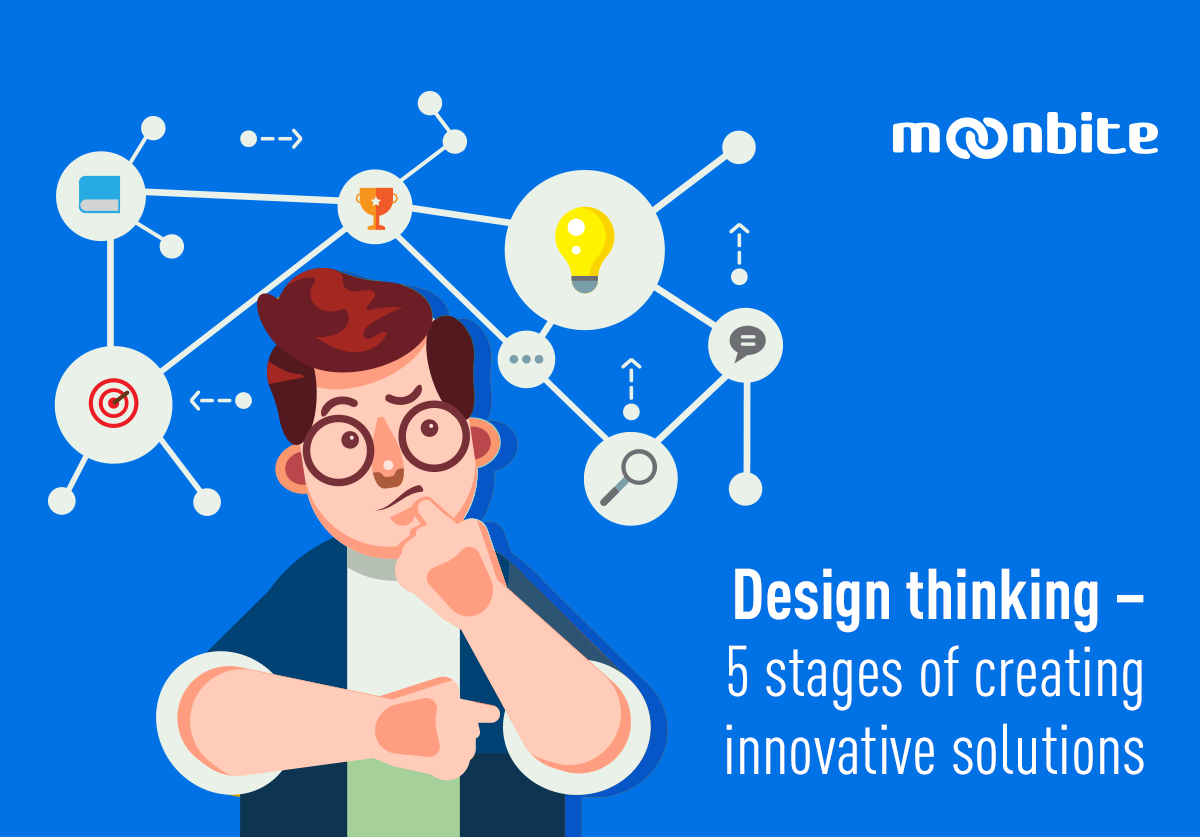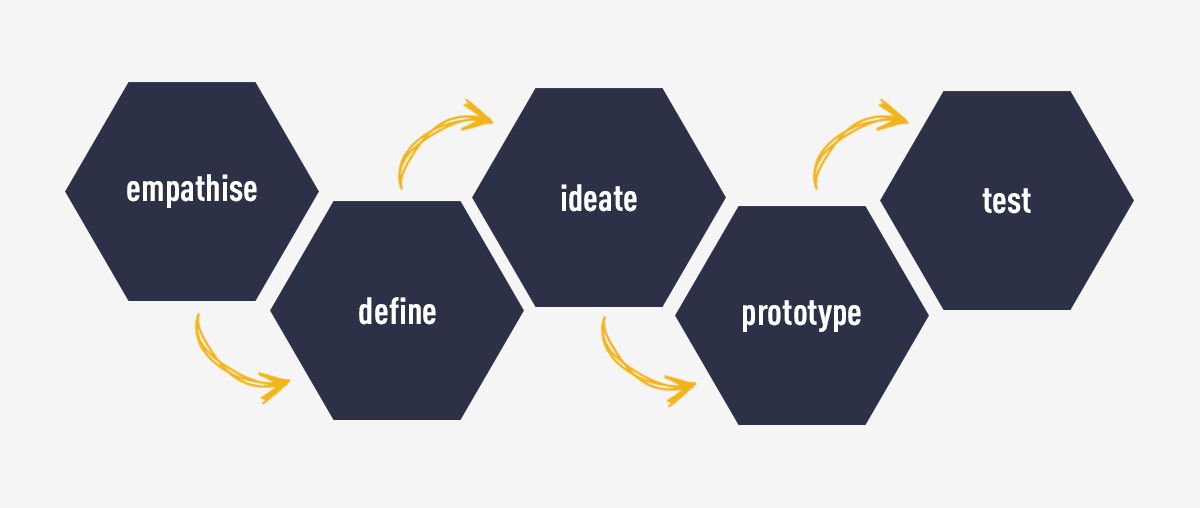Design thinking – 5 stages of creating innovative solutions
Design thinking is a concept that is becoming more and more popular. But not only among graphic designers. This method is useful for everyone who deals with designing, and also can be used to find a creative solution for business problems.

The term "design thinking" was initiated by the IDEO owner Tim Brown in the 90s. It is a method of creative thinking that focuses on solving problems with unconventional methods. Initially, design thinking was used in the design and manufacturing of everyday objects and products. Currently, design thinking finds its application in business modeling and website design.
The process of design thinking consists of several stages. The completion of one stage determines the appearance of another. Although the order is assumed in the stages of design thinking, the process of this method can also be non-linear, allowing you to return to different stages to improve the solution.

Stage 1: Empathise
The designer's goal is to take on the role of the user, rely on deep understanding and look for innovative solutions for the posed problems. You cannot limit yourself to thinking that everything must be ergonomic. In design thinking, the point is to ask yourself how and why people do different things and what their physical and emotional needs are.
Adjusting the focus group and conducting surveys allows you to find the problem and the possibility to gradually improve the product. However, this does not open the door to a wider recognition of the problem.
It is important that the designer is not afraid of unusual solutions. Being a visionary, like Walt Disney, Henry Ford, Steve Jobs or Elon Musk is very desirable. Do not be afraid to ask the question "What would happen if ...".
In design thinking, teamwork plays a large role. The more diverse team members (ie people from various industries), the more relevant information can be obtained from the user because you do not limit yourself to thinking in one direction.
Stage 2: Define
When you have an interview with the user and you have specific answers to the questions asked earlier, you can then think about the core of the problem. Defining the problem allows you to match a specific target group.
Stage 3: Ideate
In generating ideas, the most common method is the brainstorming, but design thinking does not exclude other methods of creating solutions. To create an atmosphere that is friendly to creating new ideas, you can use bodystorming, ie breaking down all barriers and going beyond your comfort zone. When generating ideas, it is important to think unconventional, sometimes even abstract and unusual. An idea that at first glance seems too exaggerated often turns out to be the best.
Stage 4: Prototype
Prototyping is an essential element in the design thinking process. Transforming the selected idea into a "finished product" enables gathering opinions and comments that will help in subsequent product improvement processes. Prototypes do not require a huge investment or effort. Sometimes they also have minimal functionality, because the prototype is only about presenting the concept to the end user.
Stage 5: Test
During the test stage, the user is present and expresses his opinion about the prototype. He describes his experience, positive or negative, and what emotions accompany that. He also answers the question of whether a given product is a solution to his problem. If the product does not meet expectations, the designer returns to one of the previous stages. If the product is positively received by the user, the next step is to bring the idea to life.
Design thinking is a universal method that could be useful not only in the product design but also in solving any problems. The process of finding a solution is flexible, allowing to apply changes at various stages and the involvement of people from outside the industry. All this gives an unconventional look at problems and designing process, enabling you to find innovative and unconventional solutions.


